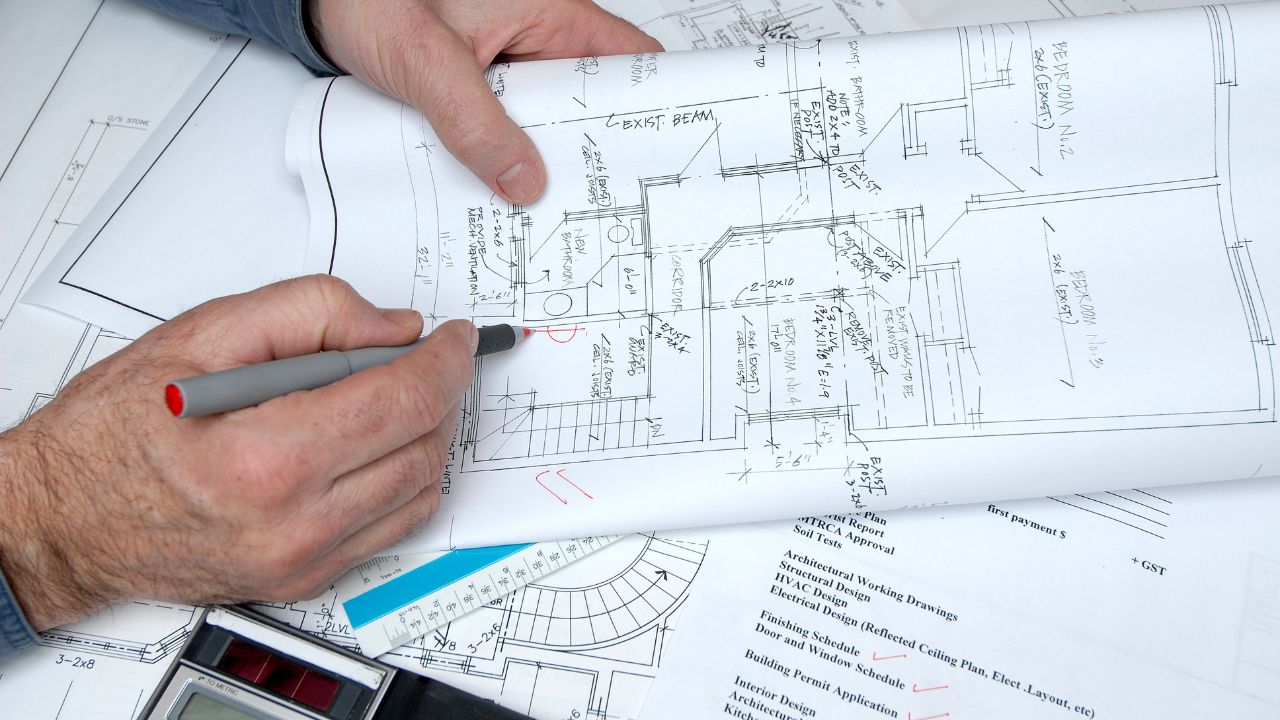Most Common Financial Mistakes Construction Companies Make
The construction industry is a challenging, capital-intensive sector where financial mismanagement is a leading cause of business failure. In 2024, construction companies have faced rising costs, higher interest rates, and payroll challenges, making strong financial management more critical than ever.
According to the U.S. Bureau of Labor Statistics, nearly 20% of construction companies fail within the first year, and 65% shut down within a decade, primarily due to cash flow issues, cost overruns, and poor financial planning.
Missteps such as underestimating project costs, misallocating funds, or failing to track job profitability can quickly erode profits and threaten a company’s long-term viability. By adopting strategic financial management practices, construction firms can improve cash flow stability, mitigate financial risks, and secure sustainable growth.

This article will explore the most common financial mistakes construction companies make—and, more importantly, how to avoid them, to help businesses build a resilient, profitable, and competitive future.
10 Financial Mistakes Construction Companies Make & Solutions
Avoiding financial mistakes is necessary for a construction company’s success. From cash flow issues to budgeting errors, here are 10 common pitfalls and how to fix them.
1. Poor Cash Flow Management
Cash flow is the lifeblood of any construction business, yet many firms struggle to balance incoming payments with outgoing expenses. Delayed payments from clients, coupled with immediate project costs for labor, materials, and equipment, often create liquidity issues.
Adopting a Construction ERP system has the potential to streamline financial management by offering real-time visibility into cash flow, automating invoices, and enhancing payment tracking.
According to a 2024 study by Levelset, 51% of construction firms report cash flow problems as their biggest financial challenge. Over-reliance on credit or short-term loans to cover operational expenses can lead to mounting debt and increased interest burdens, making it difficult for companies to stay financially stable.
How to Avoid It:
- Implement a structured invoicing system: Use automated billing and enforce strict payment terms to reduce delays. Consider offering incentives for early payments or penalties for late payments.
- Maintain cash reserves: Aim to have at least three to six months of operating expenses saved to cushion against payment delays.
- Regularly forecast cash flow: Use financial modeling to predict incoming and outgoing cash and adjust budgets accordingly.
- Use progress billing: Instead of waiting until project completion, invoice clients in stages to ensure a steady cash flow throughout the project.
2. Inaccurate Job Costing & Misallocating Costs
Construction firms operate on tight margins, and failing to track expenses accurately can distort financial reports and misrepresent project profitability. Nearly 60% of construction companies struggle with job costing accuracy, leading to cost overruns, underestimated bids, and reduced profit margins.
Overhead costs are another major concern when indirect expenses such as administrative costs, equipment depreciation, and insurance are misallocated, companies may underprice projects or miscalculate profitability, leading to financial losses.
How to Avoid It:
- Use job costing software: Invest in real-time job costing tools to track labor, materials, and equipment expenses per project, reducing errors and discrepancies.
- Separate direct and indirect costs: Clearly distinguish project-specific expenses (direct costs) from company-wide expenses (indirect costs) to avoid skewed profitability calculations.
- Regularly audit financial records: Conduct weekly or monthly cost reviews to ensure accurate expense tracking and make necessary budget adjustments before overruns occur.
- Standardize cost allocation methods: Implement consistent accounting practices to allocate overhead costs fairly across projects, ensuring pricing reflects true costs.
3. Failing to Invest in Technology & Automation
Many construction firms still rely on outdated manual processes, leading to errors, inefficiencies, and financial discrepancies. Without integrated construction management and accounting systems, companies struggle with misaligned budgets, payroll errors, and delayed invoicing.
According to a recent report by McKinsey & Company, construction remains one of the least digitized industries, with only 35% of firms leveraging automation for financial management. This lack of technology adoption increases operational costs, delays project execution, and reduces profit margins.
How to Avoid It:
- Adopt cloud-based construction management software: Use platforms like Anterra, Procore, Autodesk Construction Cloud, or Buildertrend to streamline budgeting, cost tracking, and financial reporting.
- Automate invoicing, payroll, and financial tracking: Leverage automated accounting tools like Sage 300, QuickBooks, or Viewpoint Vista to reduce errors and improve cash flow management.
- Integrate accounting with project management software: Ensure seamless data sharing between accounting, procurement, and field teams to prevent financial discrepancies and improve decision-making.
- Train staff on digital tools: Provide ongoing training for project managers and financial teams to maximize the benefits of automation and increase overall efficiency.
4. Underestimating Project Costs
Accurate cost estimation is crucial for maintaining profitability, yet many construction companies fall into the trap of lowballing bids to win contracts. This leads to budget overruns, reduced profit margins, and financial instability.
A 2024 report from Dodge Construction Network found that nearly 70% of construction projects exceed their original budget, often due to inaccurate cost projections, unexpected material price increases, and overlooked labor costs.
The volatility of material prices especially in industries dependent on steel, lumber, and concrete can significantly impact project costs. Without proper safeguards, a project that initially seemed profitable can quickly turn into a financial burden.
How to Avoid It:
- Use historical data and market trends: Leverage past project data, real-time material cost tracking, and predictive analytics to improve cost estimation accuracy.
- Include cost escalation clauses in contracts: Protect against unexpected material price fluctuations by negotiating contracts that allow price adjustments when costs rise beyond a certain threshold.
- Conduct detailed pre-construction planning: Engage with suppliers, subcontractors, and industry analysts to account for potential supply chain disruptions and inflationary trends.
- Use advanced estimating software: Invest in tools like ProEst, Buildertrend, or Sage Estimating to streamline budget calculations and cost forecasting.
5. Lack of Proper Documentation & Change Orders
In the fast-paced construction industry, poor documentation practices can lead to delayed payments, disputes, and revenue loss. Performing work without proper paperwork such as signed contracts, approved change orders, and progress documentation creates legal and financial risks.
According to a 2024 survey by Construction Executive, nearly 35% of contractors reported losing money due to undocumented work or verbal agreements. Change orders, in particular, are a major source of financial leakage.
Without formal approval and cost adjustments, contractors risk absorbing additional costs, ultimately eroding profit margins.

How to Avoid It:
- Enforce a strict documentation process: Require detailed contracts, written agreements, and formalized work orders before initiating any project work.
- Digitize records and use contract management software: Implement platforms like Procore, Autodesk Construction Cloud, or Buildertrend to maintain secure, easily accessible documentation.
- Ensure all change orders are signed and approved: Avoid verbal agreements by enforcing a clear change order process where all modifications are documented, reviewed, and signed before implementation.
- Train project managers on compliance: Educate teams on proper documentation protocols to minimize financial risk and improve dispute resolution efficiency.
6. Poor Budgeting & Overcommitting to Projects
Many construction companies overextend their financial and operational capacity by taking on more projects than their resources can sustain, resulting in cash flow constraints, delayed payments, and workforce shortages.
Furthermore, inaccurate cost forecasting and inadequate financial reserves increase the risk of economic downturns, unexpected expenses, and project delays, ultimately threatening the company’s profitability and long-term stability.
How to Avoid It:
- Strategically plan project workloads: Assess financial capacity, workforce availability, and cash reserves before committing to multiple projects.
- Implement strict cost controls: Track expenses in real time using budgeting software like Procore, CMiC, or QuickBooks Contractor to prevent cost overruns.
- Conduct regular budget assessments: Review financial health and project profitability on a monthly or quarterly basis to ensure sustainable growth.
- Maintain a contingency fund: Set aside 5–10% of total project costs as a financial buffer to cover unexpected expenses.
7. Overlooking Financial Reporting & Analysis
Many construction companies do not have a clear financial reporting system. This makes them react to problems instead of planning ahead. Without regular financial checks, they might not notice cash flow issues, hidden project losses, or extra costs until it’s too late.
Some companies only pay attention to how much money they make from projects and forget about other costs, like overhead and unexpected expenses, which can reduce their profits.
How to Avoid It:
- Conduct monthly financial reviews: Schedule regular financial check-ins to analyze cash flow, project profitability, and budget adherence.
- Track key performance indicators (KPIs): Monitor metrics like gross profit margins, accounts receivable turnover, overhead percentage, and job cost variances to detect financial inefficiencies.
- Use real-time financial dashboards: Implement construction accounting software such as Sage 300, QuickBooks Contractor, or Viewpoint to generate real-time reports on expenses, revenues, and profitability.
- Work with a financial advisor: Engage a construction CFO or financial expert to review financial trends and develop long-term strategies for sustainable growth.
8. Mismanaging Equipment & Resource Utilization
Bad management of equipment and workers can greatly increase overhead costs and lower project efficiency. Many construction companies have expensive machines that sit unused, wasting money and maintenance costs.
According to the Association of Equipment Management Professionals (AEMP), construction equipment is not used 35–50% of the time, causing financial problems. Also, not using workers effectively can lead to project delays, higher overtime costs, and lower productivity.
How to Avoid It:
- Track asset utilization: Use equipment tracking software like Tenna or HCSS Equipment360 to monitor usage rates, maintenance needs, and rental vs. ownership cost comparisons.
- Consider leasing over purchasing: If a piece of equipment is used less than 60% of the time, leasing may be more cost-effective than purchasing.
- Optimize labor distribution: Implement project management software such as Procore or Buildertrend to assign the right workers to the right tasks, preventing overstaffing or underutilization.
- Schedule preventive maintenance: Regularly servicing equipment reduces downtime, prevents unexpected breakdowns, and extends asset lifespan.
9. Late Invoicing & Missed Payment Opportunities
Construction businesses operate on tight cash flow margins, and delayed invoicing can severely impact liquidity. Many firms prioritize ongoing work over financial administration, leading to late billing cycles, missed payment deadlines, and difficulty covering project expenses.
A recent report shows that over 50% of construction companies experience payment delays of more than 30 days, creating a ripple effect on payroll, supplier payments, and project funding.
Missing scheduled bank draws for financed projects can result in insufficient funds to continue operations, forcing companies to take on expensive short-term debt.

How to Avoid It:
- Schedule regular payment follow-ups: Establish a structured accounts receivable process, sending reminders before due dates and following up on late payments.
- Enforce late payment penalties: Clearly define late fees and interest charges in contracts to encourage timely payments.
- Optimize bank draw schedules: Work closely with lenders to ensure timely bank draws are requested and approved to maintain smooth project financing.
10. Not Planning for Taxes & Regulatory Compliance
Not planning for taxes and legal rules can lead to big fines, legal problems, and even project shutdowns. Many construction companies poorly manage payroll taxes, sales taxes, and taxes related to projects, which can create unexpected financial issues.
A latest report from the IRS found that small construction businesses have a lot of tax problems, often because they misclassify employees, don’t save enough for taxes, or miss out on deductions. Also, new tax laws and local rules can change every year, so it’s important for companies to stay updated and follow the rules.
How to Avoid It:
- Work with a tax professional: Hire a construction-focused CPA or tax consultant to ensure compliance with federal, state, and local tax laws.
- Set aside tax reserves in project budgets: Allocate a portion of each project’s revenue to cover expected tax liabilities, preventing year-end financial strain.
- Use payroll tax software: Implement tools like ADP, Paychex, or Foundation Software to automate tax withholdings and reporting, reducing the risk of miscalculations.
Conclusion
Effective financial management is the base of a successful construction business. From cash flow issues to inaccurate job costing and tax mismanagement, even small financial mistakes can quickly add up and threaten long-term stability.
By implementing strategic budgeting, maintaining accurate financial records, and leveraging technology, construction firms can minimize risks and improve profitability. Proactive planning, such as setting aside tax reserves, automating invoicing, and tracking key financial metrics, ensures that businesses remain financially resilient despite market fluctuations.
In an industry where margins are often tight and project complexities are high, construction companies must adopt a disciplined approach to financial management. Avoiding common pitfalls like poor documentation, overcommitting to projects, and neglecting financial analysis can make the difference between business growth and failure.
By staying informed, utilizing the right tools, and seeking professional guidance when needed, construction firms can build a strong financial foundation, ensuring long-term success and sustainable growth.
Question Answer
Frequently Asked Question
The most common financial mistake is poor cash flow management. Delayed payments, unexpected project costs, and over-reliance on credit can lead to serious liquidity issues, making it difficult to cover expenses and complete projects on time.
Construction firms can improve job costing accuracy by using specialized construction accounting software, tracking expenses in real-time, and correctly allocating direct and indirect costs. Regular financial reviews help ensure that job costs reflect actual expenditures.
Failing to plan for taxes can lead to penalties, legal trouble, and unexpected financial burdens. Many firms mismanage payroll taxes, sales taxes, and deductions, which can significantly impact their bottom line. Staying updated on tax laws and working with a tax professional can help maintain compliance.
Technology streamlines financial processes by automating invoicing, payroll, job costing, and cash flow forecasting. Cloud-based construction management software ensures real-time financial tracking, reduces errors, and improves overall efficiency.
To prevent overcommitting, companies should carefully assess their financial capacity before taking on new projects, implement strict budgeting controls, and regularly review workload distribution. Proper planning ensures that resources are allocated efficiently without straining cash flow.

